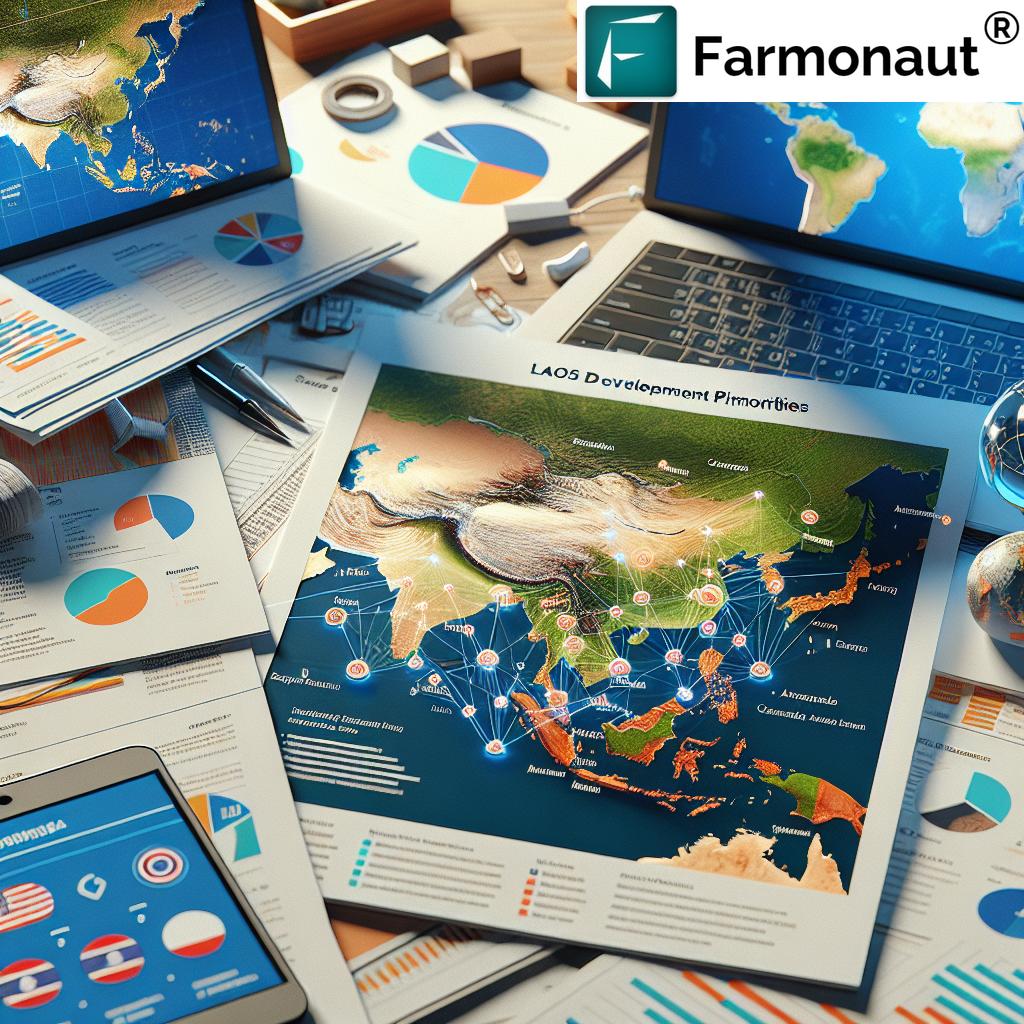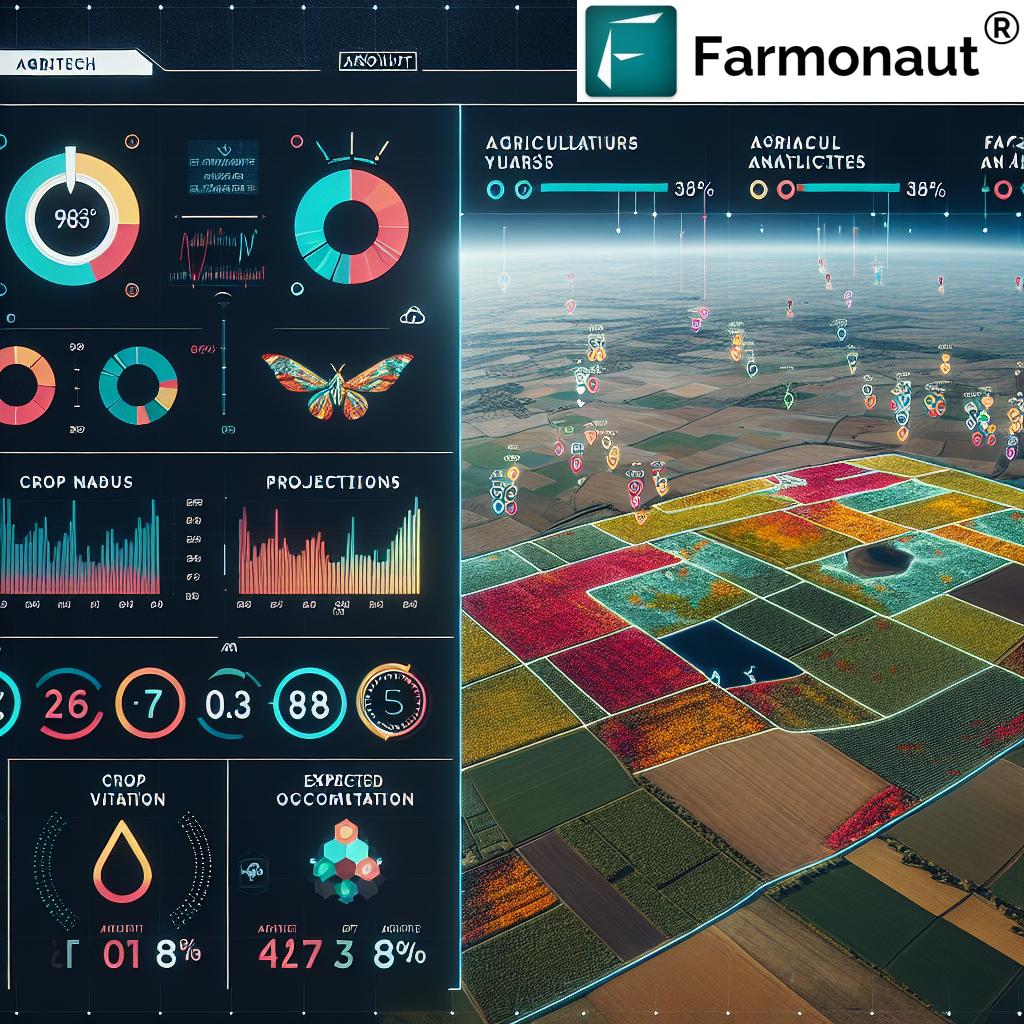OECD Southeast Asia 2025: Boosting Trade, Agriculture & Investment
“Thailand’s trade with OECD countries grew by over 30% from 2015 to 2023, strengthening regional economic ties.”
Introduction: The Changing Face of Southeast Asia in 2025
As we approach 2025, Southeast Asia stands at a critical juncture for trade, agriculture, and foreign investment. Nations like Thailand and Laos are playing pivotal roles in these transformative times—driven in part by the OECD Southeast Asia Regional Programme. This initiative not only elevates our region’s profile but fosters strategic economic collaboration with global partners from Japan, Australia, and the OECD member states. Recent deliberations in Bangkok, especially at the Policy Dialogue Bangkok 2025—attended by eminent leaders including KPL Minister of Foreign Affairs Mr. Thongsavanh Phomvihane of Laos—have set the tone for an ambitious and integrated development roadmap.
By blending innovative policy frameworks with emerging agri-technologies—such as the advanced solutions offered by Farmonaut—our region is better positioned than ever to boost productivity, ensure food security, attract high-quality investment, and facilitate sustainable economic reforms. Let’s explore how these elements interlink, and what the future holds for ASEAN OECD cooperation, infrastructure development in Southeast Asia, foreign investment in Laos, and agriculture in Asia.
OECD Southeast Asia Regional Programme: Purpose & Scope
The OECD Southeast Asia Regional Programme (OECD SEARP) was born out of a recognition: Southeast Asia is central to addressing the world’s most urgent challenges and opportunities. Our region is a major engine for global economic growth, a vital production and logistics hub, and a nexus for innovation in agriculture, digital transformation, and sustainable development.
OECD SEARP is designed to:
- Facilitate comprehensive policy dialogue between Southeast Asian economies and OECD countries
- Promote regional economic integration while advancing individual nations’ development objectives
- Share best practices in policy formulation, implementation, and evaluation
- Support adoption of international standards in areas like investment, corporate governance, trade, sustainability, and agriculture
- Build capacity for policy makers in ASEAN countries through research, data sharing, and joint forums
Key Focus Areas:
- Trade and Investment Facilitation
- Infrastructure Development
- Agriculture and Food Security
- Clean Energy Transition
- Public-Private Partnerships
- Sustainable Development Goals (SDGs)
With these objectives, the OECD Southeast Asia Regional Programme is a cornerstone for countries—including Laos, Thailand, Vietnam, Indonesia, Singapore, Cambodia, Brunei, and the Philippines—to align strategic priorities and leverage global expertise for national transformation.
Policy Dialogue Bangkok 2025: Insights & Highlights
The Policy Dialogue Bangkok 2025 served as a pivotal moment for regional policy recalibration under the OECD Southeast Asia Regional Programme. Bringing together delegations from Thailand, Laos, Vietnam (as co-chair), Australia (as co-chair), Japan, Indonesia, Singapore, Cambodia, Brunei, and the Philippines, the forum fostered in-depth discussions on three cornerstones:
- OECD Membership Prospects: With Thailand and Indonesia actively seeking OECD membership, the dialogue evaluated entry frameworks, reform requirements, and potential benefits for ASEAN stakeholders.
- Regional Cooperation Benefits: How nations can utilize OECD knowledge to catalyze reforms, harmonize standards, and enable cross-border collaboration in key sectors, especially trade and infrastructure.
- Quality Investment Promotion: Strategies to attract sustainable foreign direct investment (FDI) and raise the standards of investment screening, transparency, and post-investment services under OECD frameworks.
One of the most notable moments came during the plenary “A Partner for Prosperity,” where Minister Thongsavanh Phomvihane of Laos offered insight into his nation’s development trajectory—and by extension, that of many developing ASEAN countries. His remarks emphasized:
- Building an open, predictable environment for trade and foreign investment in Laos
- Scaling up infrastructure development in Southeast Asia, especially in agriculture, clean energy, and mining
- Strengthening public-private collaboration through OECD best practices
It is clear that as Southeast Asia integrates more deeply with the OECD, we unlock pathways to prosperity for our communities and industries alike.
“Laos increased agricultural exports by 18% in 2023, reflecting successful OECD-backed infrastructure and investment initiatives.”
ASEAN OECD Cooperation: Opportunities for Southeast Asia
The benefits of ASEAN OECD cooperation are multifaceted. By aligning our regional standards with global benchmarks, we:
- Enhance our competitiveness in global trade
- Attract higher-value, responsible foreign investment
- Accelerate agriculture technology transfer
- Secure better infrastructure financing and development
For governments and enterprises in Thailand, Laos, or any of the ASEAN-6, adopting OECD policy frameworks ensures we are seen as reliable partners on the international stage. It also provides:
- Access to OECD analytical tools
- Opportunities for peer learning
- Capacity-building initiatives designed specifically for Southeast Asian priorities
In practical terms, this cooperation manifests in programmatic support for trade facilitation, agriculture innovation, green energy transition, and responsible resource management. For example, wide-scale efforts are underway to implement best-in-class approaches to public-private partnerships in infrastructure projects—directly impacting transport, agribusiness, and energy sectors.
Thailand OECD Membership: Impacts and Prospects
The potential Thailand OECD membership marks a watershed moment for policy and market integration between Southeast Asia and the world. As a regional economic powerhouse, Thailand’s accession is set to:
- Elevate regional standards for trade, investment, governance, and transparency
- Open new doors for bi- and multilateral cooperation among ASEAN and OECD economies
- Drive regulatory convergence in areas critical to infrastructure development in Southeast Asia
- Boost investor confidence via stronger rule of law and contract enforcement
Thailand’s journey towards OECD accession is not without its challenges. Among the key criteria reviewed are:
- Adopting OECD recommendations on anti-corruption, market liberalization, and sustainable development
- Streamlining the legal environment for foreign direct investment
- Modernizing data sharing and transparency in core sectors (such as agriculture and energy in Asia)
Progress in these areas will profoundly influence how other Southeast Asian countries—like Vietnam, Indonesia, and Laos—develop their own roadmaps for greater global integration.
Laos Development Priorities: Agriculture, Infrastructure & Investment
When we consider Laos development priorities, three strategic pillars emerge—each aligned with the vision articulated by KPL Minister of Foreign Affairs, Mr. Thongsavanh Phomvihane at the recent Bangkok dialogue:
- Establishing a robust climate for trade and foreign investment in Laos
- Accelerating infrastructure development in agriculture, clean energy, and mining
- Harnessing OECD’s international best practices in public-private partnerships and policymaking
Let’s explore these in greater depth:
1. Boosting Trade & Market Access
By simplifying customs procedures, embracing digitalization, and adopting OECD-endorsed regulatory frameworks, Laos is amplifying its role as both a regional and global trade hub.
2. Infrastructure Investment in Key Sectors
Strategic investments in logistics corridors, energy grids, and digital platforms are the backbone of Laos’ economic transformation. OECD technical guidance underpins the development of railway, renewable energy, and smart agriculture corridors.
For those in the agricultural domain, integrating digital advisory systems and crop monitoring—akin to those provided by Farmonaut’s large-scale farm management—is increasingly essential for maximizing the value of such infrastructure.
3. Public-Private Partnerships (PPP)
A dynamic public-private partnership landscape, informed by OECD frameworks, powers infrastructure projects while attracting private capital, ensuring risks are shared and innovation is fostered.
Furthermore, application of technologies—like Farmonaut’s fleet management solutions—optimizes agricultural logistics and asset utilization.
Southeast Asia Trade Policies & Investment Trends for 2025
The coming years will see significant evolution in Southeast Asia trade policies and investment promotion in ASEAN. Guided by OECD principles, these trends are likely to dominate:
- Trade Facilitation & Digitalization: Streamlining cross-border processes, enhancing customs technologies, and enabling end-to-end e-commerce
- Investment Screening Standards: Aligning regulatory oversight and corporate governance frameworks with international best practices
- Strategic Sectoral Incentives: Targeted incentives for agriculture, energy, and mining foster sustainability and competitiveness
- Regional Value Chain Integration: Coordinated production and logistics boosting intra-ASEAN trade and collective bargaining power with OECD economies
- Infrastructure Prioritization: Large-scale transport, agri-logistics, digital and energy projects, underpinned by sustainable financing models
These evolving trade and investment climates open up new business models for those developing innovative platforms—such as Farmonaut’s blockchain-based product traceability—which assure compliance, provenance, and quality for global trading partners.
Comparative Regional Overview Table: Trade, Agriculture, and Investment (2025)
| Country | Estimated 2025 Trade Volume (USD bn) | Agriculture Output (Metric Tons) | Major Infrastructure Investments | Estimated FDI Inflow (USD mn) | OECD Programme Status |
|---|---|---|---|---|---|
| Thailand | 670 | 150 million | Eastern Economic Corridor, Smart Agriculture Networks | 16,000 | Active, OECD Accession in Process |
| Laos | 25 | 16 million | Laos-China Railway, Renewable Energy Hubs | 1,450 | Active, Policy Reform Underway |
| Southeast Asia Avg. | ~400 | 80 million | Regional Corridors (e.g., ASEAN Highway), Digital Connectivity | 7,200 | All Engaged; Multiple With Accession Aspirations |
This table offers insights into how trade, agriculture, and investment are interlinked with OECD programme participation, policy dialogue, and regional priorities in Southeast Asia for 2025.
Agriculture and Energy in Asia: Technology and Sustainability
The twin pillars of agriculture and energy in Asia are undergoing a seismic shift, powered by new technology, green policies, and heightened market demands. As both sectors are integrally linked—think of biofuels, solar-powered irrigation, or climate-resilient crops—regional strategies now emphasize:
- Satellite and AI Monitoring: Delivering targeted insights on crop health, water use, and resource allocation.
- Green Mining and Clean Energy: Adopting clean energy sources, low-emissions mining practices, and circular economy principles.
- Digital Traceability: Blockchain-enabled transparency ensures product provenance and compliance with OECD-recognized sustainability standards.
- Smart Advisory Systems: AI-powered advisories help farmers address weather variability, pest outbreaks, and resource constraints.
With mounting consumer demand for sustainable, ethically sourced products, these trends also sustain investment promotion in ASEAN. Companies and governments alike are investing in platforms with robust traceability, real-time monitoring, and carbon accounting features.
For those in Cambodia, Brunei, Indonesia, Singapore, and the Philippines, such technology adoption can leapfrog traditional challenges, creating a digitally native agriculture and energy sector ready for global markets.
You can explore carbon monitoring and sustainability tracking in agriculture with Farmonaut’s carbon footprinting solution. This platform is helping agribusinesses accurately track and reduce emissions, aligning with OECD and regional sustainability goals.
Farmonaut’s Role in Precision Agriculture & Regional Transformation
As Southeast Asia undergoes rapid transformation in trade, agriculture, and investment, next-generation technologies like Farmonaut are revolutionizing the way our food is produced and managed.
What is Farmonaut?
Farmonaut is an innovative agricultural technology company committed to making precision agriculture affordable and accessible worldwide. By harnessing satellite imagery, AI advisories, blockchain traceability, and digital tools, Farmonaut empowers:
- Individual farmers in Laos, Thailand, Vietnam, Indonesia, Cambodia, Brunei, Singapore, and the Philippines to monitor crops, manage resources, and make data-driven decisions
- Agribusinesses and cooperatives to efficiently manage large-scale farms, optimize operations, and ensure supply chain transparency
- Government agencies to implement large-scale monitoring programs, design data-driven policies, and improve subsidy distribution accuracy
- Financial institutions to verify farm data for crop loan and insurance products, streamlining approvals and reducing fraud—explore details at crop loan and insurance services
- Corporate clients in food, textile, and related industries to establish end-to-end traceability, meeting regulatory and consumer demands—learn more about product traceability
Key Technologies
- Satellite-based crop health monitoring: Real-time NDVI, vegetation indices, and soil moisture tracking reduce resource waste and prevent crop losses
- Jeevn AI advisory system: AI-driven, hyperlocal farming advice, weather forecasts, and crop management tips for improved yield and resilience
- Blockchain for product traceability: Assures authenticity and transparency from farm to table. Increases trust for regional and international trade partners
- Fleet and resource management tools: Optimizing agribusiness logistics—discover fleet management solutions
- Carbon footprint tracking: Assisting agribusinesses to measure and minimize emissions—see carbon footprinting tools
- Developer API and integrations: Integrate satellite and weather data directly into any system via API access. Learn more in the API Developer Docs
Why Farmonaut Stands Out
- Cost-effective—No expensive sensors or hardware; affordable satellite-based monitoring for all farm sizes
- Scalable—Solutions for smallholders, corporates, and government agencies alike
- Transparent—Blockchain ensures verified product origins for global buyers, supporting export ambitions
- Sustainable—Tools to reduce resource use, monitor emissions, and align with eco-regulations
- Mobile-friendly—Available on Android, iOS, and web/apps for on-the-go management
- API Access—Easy integration into any agri-tech, logistics, or finance system
Empowering the Region
By deploying satellites, AI and blockchain at scale, Farmonaut helps make Southeast Asia’s agriculture sector:
- More efficient and sustainable
- Better prepared for climate risks
- More attractive to local and international investors
- Ready for the demands of OECD-aligned export markets
For farm management, AI advisories, and precision insights for trade and investment in ASEAN, Farmonaut leads the way. Explore more about crop, plantation & forest advisory services for tailored support.
Farmonaut Subscription Plans
Farmonaut offers flexible, subscription-based access for individuals, businesses, and institutions. Select a plan based on your needs—be it number of hectares monitored, update frequency, or required service modules. API access is also available for custom integrations.
Frequently Asked Questions
What is the OECD Southeast Asia Regional Programme?
The OECD Southeast Asia Regional Programme (SEARP) is an initiative aimed at promoting policy dialogue and cooperation between Southeast Asian nations and OECD countries, fostering economic growth, reform, trade facilitation, and sustainable development in the region.
How does OECD membership benefit Thailand and Laos?
Membership or engagement with the OECD brings access to global best practices, technical expertise, improved investment climates, better trade opportunities, and enhanced international credibility for countries like Thailand and Laos.
What development priorities has Laos set for 2025?
Laos is prioritizing an enabling environment for trade, boosting infrastructure (especially in agriculture, clean energy, and mining), and strengthening public-private partnerships using OECD best practices to spur investment.
How does Farmonaut support agriculture in Southeast Asia?
Farmonaut applies satellite imaging, AI-driven advisories, blockchain traceability, and resource management tools to make precision agriculture accessible and affordable. This enhances productivity, efficiency, transparency, and sustainability across Asia.
Can Farmonaut’s platform be integrated into our agri-tech or logistics systems?
Yes, Farmonaut provides a robust API with full developer documentation for seamless integration into third-party apps or business solutions.
Is Farmonaut only for large businesses?
No, Farmonaut serves a wide audience—from smallholders to large agribusinesses, government programs, and financial institutions—thanks to its flexible subscription and scalable platform. Try the app today!
Conclusion: Shaping the Future of Trade, Agriculture & Investment in Southeast Asia
The strategic intersection of the OECD Southeast Asia Regional Programme, national development agendas, and innovative agri-technologies like Farmonaut is redefining how we approach trade, agriculture, and investment across the region.
Guided by the commitment of leaders such as KPL Minister Thongsavanh Phomvihane of Laos, and bolstered by the collective efforts of Thailand, Vietnam, Indonesia, Australia, Japan, Singapore, Cambodia, Brunei, and the Philippines, the region is advancing toward:
- More open and efficient trade regimes
- Smarter, technology-enabled agriculture sectors
- Resilient, transparent investment ecosystems
- Sustainable, high-impact infrastructure development in Southeast Asia
As we look to 2025 and beyond, regional harmonization with OECD standards—paired with agile adoption of digital, AI, and satellite solutions—will unlock new sources of prosperity and resilience for us all.
Whether you are a policymaker, agribusiness leader, fintech innovator, or farmer, now is the time to seize these advantages. Try the Farmonaut app or API for your agricultural transformation journey, and join us in shaping the future for a sustainable, integrated, and thriving Southeast Asia.














